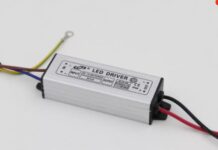The global human centric lighting market was valued at US$ 3.25 billion in 2024 and is projected to reach US$ 20.41 billion by 2033, reflecting a Compound Annual Growth Rate (CAGR) of 22.65% during the forecast period from 2025 to 2033.

The demand for human-centric lighting (HCL) continues to rise as awareness of its physiological and psychological benefits aligns with advancements in IoT-enabled lighting systems. This growing interest is driven by recognizing how lighting can significantly impact mood, productivity, and well-being.
Key applications within the human-centric lighting market include healthcare, education, and smart homes. These sectors are increasingly adopting HCL solutions to create environments that enhance comfort and support the specific needs of their occupants. Geographically, Europe and North America lead the human-centric lighting market in terms of demand, consumption, and innovation.
Human Centric Lighting Market Key Takeaways
- By Installation Type, New installations dominate the human-centric lighting market, accounting for a 56% revenue lead.
- By End Users, Enterprises hold a substantial 25% revenue share in the human-centric lighting market.
- By Distribution Channel, as of 2024, offline channels capture over 60% of the revenue share in the human-centric lighting market.
- In terms of control types, wireless controls account for a significant 60% revenue share in the human-centric lighting market.
Regional Analysis
Europe Leading the Market
Europe holds a substantial 34% share of the human-centric lighting market. This significant presence is largely attributed to stringent regulatory frameworks and proactive investments in health-centric infrastructure.
- Driving Adoption Through Regulations: The existence of robust regulatory frameworks and building standards in Europe is a key driver for the adoption of human-centric lighting solutions. These regulations promote the implementation of lighting systems that prioritize occupant health and well-being.
- Energy Efficiency Initiatives: Initiatives aimed at improving energy efficiency, such as the EU’s Energy Performance of Buildings Directive (EPBD), have catalyzed the development of innovative lighting solutions. These solutions not only reduce energy consumption but also enhance the comfort and well-being of occupants.
- Mandates for Circadian Lighting: The EU’s updated EN 12464-1:2024 regulation mandates the inclusion of circadian lighting in workplaces. Corporations that fail to comply may face fines of up to 4% of their annual turnover. This stringent regulation has propelled countries like Germany (which accounts for 26% of regional revenue), along with France, the Netherlands, and Sweden, to lead in the adoption of human-centric lighting solutions.
North America’s Market Share
In 2023, North America accounted for a 26% share of the human-centric lighting (HCL) market. This significant share highlights the region’s strong demand for innovative lighting solutions.
- Proliferation of Smart Technologies: The proliferation of smart technologies is playing a crucial role in facilitating the adoption of HCL systems across North America. As consumers and businesses increasingly embrace advanced technology, the integration of lighting systems with smart capabilities becomes more prevalent.
- Integration with IoT and Connected Devices: The rise of the Internet of Things (IoT) and connected devices has transformed lighting systems. These systems can now be integrated with sensors, data analytics, and user interfaces, enabling the creation of dynamic environments tailored to individual preferences and needs. This integration not only enhances user experience but also promotes energy efficiency and overall functionality in various settings.
Asia Pacific Growth Projections
The Asia Pacific market is projected to experience a significant CAGR from 2025 to 2033. This growth is largely attributed to the region’s rapid urbanization and increasing population.
- Urbanization and Indoor Lifestyles: As urban areas expand, populations are spending more time indoors. This shift toward indoor lifestyles has led to a greater awareness of how lighting can influence mood, productivity, and overall well-being.
- Importance of Human-Centric Lighting: Human-centric lighting solutions are increasingly recognized for their ability to enhance indoor environments. By promoting wellness within homes, these solutions contribute to improved quality of life for residents, making them an essential aspect of modern living.
Top Trends Escalating the Human Centric Lighting Market
IoT-LiFi Convergence: The convergence of IoT and LiFi technology facilitates real-time biometric-adjusted lighting personalization. This integration allows lighting systems to adapt dynamically to individual user needs, enhancing comfort and promoting well-being.
AI-Driven Micro-LED Spectral Tuning: AI-driven micro-LED spectral tuning is becoming increasingly popular for aligning lighting with hyperlocal cultural preferences and individual chronotypes. This technology ensures conditions are optimized for various environments and personal routines.
Sustainability in HCL Fixtures: Sustainability is driving the demand for energy-efficient and recyclable human-centric lighting (HCL) fixtures. As businesses and consumers become more environmentally conscious, the emphasis on sustainable lighting solutions continues to grow.
Circadian Rhythm Optimization in Workplaces: Optimizing circadian rhythms in workplaces has been shown to boost productivity and reduce absenteeism. By providing appropriate lighting that aligns with natural body rhythms, organizations can create healthier and more efficient work environments.
Healthcare Adoption of Light Therapy: The healthcare sector is increasingly adopting non-pharmacological light therapy for mental health treatments. This approach utilizes specific lighting conditions to enhance mood and improve overall mental well-being.
Regulatory Mandates for Circadian-Efficient Lighting: Regulatory mandates are emerging that require circadian-effective lighting in public infrastructure projects. These regulations aim to ensure that public spaces contribute positively to the health and well-being of individuals by incorporating effective lighting solutions.
Human Centric Lighting Market Segmentation
By Installation Type
New installations currently account for a 56% revenue lead in the human-centric lighting market, a trend that is deeply rooted in the global construction industry’s shift towards “Wellness First” blueprints. This movement emphasizes the importance of creating environments that promote health and well-being for occupants. Significantly, the updated International Building Codes (IBC 2024) now mandate the inclusion of circadian lighting in all commercial projects exceeding 10,000 square feet.
By End Users
Enterprises currently hold a 25% revenue share in the human-centric lighting market, largely due to their focused deployments of targeted human-centric lighting solutions in high-stakes operational environments. These environments demand precise lighting adjustments that cater to the needs of workers, thereby enhancing productivity and well-being. The emergence of “biometric billing” in enterprise contracts for human-centric lighting further solidifies their leadership in this sector.
By Control Type
Wireless controls account for 60% of the revenue share in the human-centric lighting market, primarily due to their essential role in facilitating adaptive, data-driven ecosystems that traditional wired systems simply cannot replicate. This innovative approach allows for greater flexibility and responsiveness in lighting solutions, enhancing user experience and overall functionality. In addition to the human-centric lighting market, the automotive sector is increasingly adopting wireless controls within corporate headquarters.
Recent Developments in the Human Centric Lighting Market
- Leviton’s MD-ALTO Overhead Lighting Solution: In April 2025, Leviton introduced the MD-ALTO, a new overhead lighting solution tailored specifically for modern patient rooms. This innovative lighting solution is designed to meet the ANSI/IES RP-29 standard, moving away from traditional compartmental or reflector-style lighting. The MD-ALTO features a clean, unified design that not only supports clinical tasks but also creates a more comfortable environment for patients.
- Kscape by K-array and Kumux Partnership: In February 2025, Kscape by K-array announced a partnership with Kumux. This collaboration aims to develop human-centric AV systems for contemporary workspaces. Kumux specializes in designing software that leverages science to optimize existing artificial lighting. By utilizing AI algorithms, they enhance well-being in work environments, ultimately improving overall productivity and comfort.
Top Companies in the Human Centric Lighting Market
- Signify
- OSRAM GmbH
- Acuity Brands, Inc.
- Hubbell Inc.
- Wipro Lighting
- Lutron Electronics Co., Inc.
- Zumtobel Group AG
- Glamox AS
- Trilux GmbH & Co. KG
- Other Prominent Players
Market Segmentation Overview
By Offering
- Hardware
- Luminaires
- Light Engines
- Sensors
- Switches
- Software
- Services
- Design
- Integration
- Maintenance
By Control Type
- Wired
- Wireless
By Installation Type
- New
- Retrofit
By Application
- Education
- Healthcare
- Enterprises
- Residential
- Retail
- Industrial
By Distribution Channel
- Offline
- Direct
- Distributors
- Online
By Geography
- North America
- Europe
- Asia-Pacific
- Latin America
- Middle East and Africa
Source: https://www.astuteanalytica.com/industry-report/human-centric-lighting-market

















